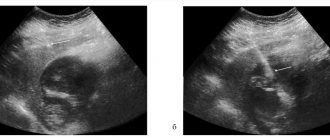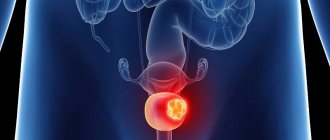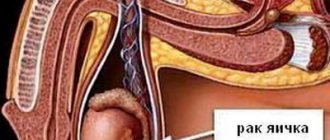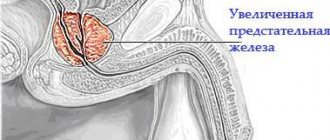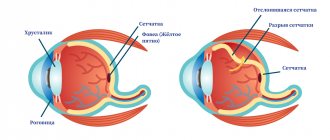Benign tumors in most cases do not pose a great danger to humans, but some types can manifest themselves quite aggressively:
- penetrate adjacent organs;
- compress organs and tissues;
- cause pain of varying intensity;
- compress nerve fibers and roots, blood vessels.
Therefore, it is important to diagnose the tumor in a timely manner and take measures to treat it. At the MedicPro clinic in Kaluga, you can get qualified advice from an oncologist, undergo an examination and competent treatment, developed individually in accordance with your picture of the disease.
Characteristics of benign and malignant tumors
There are clear criteria:
- Delineation of the tumor from adjacent tissues.
- Growth rate.
- Ability to metastasize.
- Histological portrait of cells.
- Patient survival.
Benign tumors are clearly demarcated from healthy tissue and often have a capsule. Cancer grows into surrounding tissues, penetrates into blood vessels, and its contours are more amorphous.
Most benign tumors can grow for years without showing symptoms. Carcinomas grow quickly, disrupting organ functions and poisoning the body. Growth is accompanied by fatigue, weakness, weight loss, and pain.
Benign formations “sit” in one place, gradually grow and push apart healthy tissues, and are mobile when palpated. Cancer cells are loosely attached to each other, are easily separated and spread by lymph and blood throughout the body. They settle in the lymph nodes, bones, and internal organs, forming new tumor foci - metastases. On palpation, the node is fused to the tissues and does not move.
A biopsy provides a lot of information. The study shows that benign cells are similar to healthy ones, their structure is clearer. The structure of malignant cells is greatly altered due to pronounced mutations. The less the cells resemble the tissue from which they grew, the worse the prognosis for treatment and life.
A benign tumor, such as prostate adenoma, can be removed and a complete cure can be achieved. If a relapse occurs, it will be in the same place where the primary lesion was found. Malignant tumors are difficult to remove completely. Even one remaining cell will give rise to a new tumor either in the old place or where it got through the vessels. The survival rate of patients is significantly lower.
Symptoms
Benign neoplasms in the initial stages have virtually no symptoms. As the tumor grows, the following signs may appear:
- a palpable lump, usually close to the surface of the skin;
- pain not associated with injury or other explainable causes.
In some cases, these symptoms appear simultaneously. The most difficult situation is with neoplasms in internal organs. In the early stages, they are diagnosed by chance: during examination for other indications. In the later stages - when pain, discomfort and other symptoms appear.
Types of tumors
Benign:
- cysts;
- nevi or moles;
- nodules whose name has the oma suffix: fibroma, myoma, adenoma, papilloma - depending on the specific tissue.
Malignant:
- formations whose name is appended with the word carcinoma, sarcoma, blastoma, blastosis (fibroblastoma, myosarcoma, adenocarcinoma);
- oncological diseases of the blood - lymphogranulomatosis, leukemia and others;
- skin cancer - melanoma, basal cell carcinoma.
The differences are not always obvious. A thorough diagnosis is needed to look for atypical cells.
Diagnosis of cancer in St. Petersburg
A timely diagnosis is the key to successful treatment. That’s why it’s so important to choose a clinic where experienced doctors will diagnose you using modern equipment. Otherwise, you risk wasting time and money and contributing to the development of pathology.
MRI at the Elena Malysheva Diagnostic Center means only qualified doctors with many years of experience, modern equipment and confidence in the result!
Sign up for an MRI at the Elena Malysheva Diagnostic Center near the Baumanskaya metro station (see map) by phone or leave a request on the website.
Baumanskaya metro station (see map) 8
leave a request on the website
Hidden in the “thicket” of hair... are atheromas
Atheroma is a benign tumor that occurs as a result of blockage of the sebaceous gland duct. The mushy contents of the tumor (hence the name) consist of fatty substances and epithelial cells. The size of atheroma can be from a pea to a chicken egg and larger. Atheroma usually occurs on any part of the body where hair grows, but most often occurs on the scalp, face, and back. Externally, atheroma looks like a painless, round, dense formation with clear contours, while the skin above the atheroma does not fold. The contents of the tumor can become infected, resulting in pain, redness, swelling, tenderness, and fever. When suppuration occurs, the contents of the atheroma soften. Treatment is opening the abscess with subsequent drainage of the cyst cavity. Complete excision of the atheroma in this case is possible only after the inflammatory changes have subsided.
Ball on a leg
Fibroma consists of fibrous connective tissue. If smooth muscle fibers are mixed with this component, the tumor is called fibromyoma. This benign formation grows slowly, over the years, has a dense consistency, in most cases it is spherical in shape; sometimes “sits” on a stalk (polyp). Treatment for atheroma is surgical only. In our Center, surgery to remove such a formation is performed on an outpatient basis, and it is completely painless. The wound heals very quickly (if the atheroma is really small and shallow). The formation of scars primarily depends on the individual properties of human tissue; usually, after such an intervention there are practically no noticeable marks.
Diagnosis via injection
The diagnosis of a benign neoplasm is usually made on the basis of a clinical examination. In difficult cases, cytological puncture with a thin needle can be used to distinguish them from other tumors. Such a puncture is practically painless; on the other hand, it can provide very valuable information for the diagnosis. Due to the fact that our Center has its own clinical and biochemical laboratory, puncture results can be obtained in the shortest possible time. Timely ultrasound examination, which is used in our Center along with other diagnostic methods, can also be of great importance for making an accurate diagnosis.
1.What are tumors and why do they appear?
A tumor is a pathological formation in the organs and tissues of the body, resulting from abnormal and uncontrolled cell growth. The science that studies the causes of tumors, their types, development, as well as methods of treating tumors is called oncology
.
The development of tumors is associated with the presence of a certain genetic predisposition, as well as disturbances in the functioning of the immune system. Various factors can trigger the appearance of a tumor, for example, mechanical stress (constant tissue friction, injury), exposure to ultraviolet radiation, ionizing radiation, chemicals (including tobacco smoke), as well as some bacteria.
A must read! Help with treatment and hospitalization!
Causes:
The process of formation of benign tumors is based on damage to the genetic material of the cell, which leads to its uncontrolled growth and division, and also disrupts the process of programmed cell death.
Today, a number of factors are known that can lead to such abnormal cell behavior:
- Dysfunction of the endocrine and immune systems.
- Viral load on the body.
- Mechanical injuries of soft tissues.
- Hormonal imbalance.
- Exposure to external factors: ultraviolet, radiation, high temperature, etc.
- Congenital genetic diseases.
Swollen vessels
Hemangioma is a benign neoplasm, or, simply, a tumor, which is a collection of abnormally overgrown blood vessels. Despite their benign nature, hemangiomas are characterized by rapid progressive growth. As they grow, they destroy the tissues surrounding them. This becomes dangerous if hemangiomas are localized on the oral mucosa, ears, and eye area. Vascular tumors located in these places can disrupt the most important functions of the body - vision, hearing, breathing. A characteristic feature of hemangiomas is the unpredictability of their behavior. Sometimes a small, punctate hemangioma turns into a large tumor in 2-3 months, requiring treatment. Hemangiomas disappear just as spontaneously. When dealing with hemangiomas, doctors previously used wait-and-see tactics. They preferred to start treatment when it was finally clear that the tumor would not go away on its own. Today, surgeons recommend removing hemangiomas as early as possible. There is no universal method for treating hemangiomas. The doctor chooses a tactic based on the type of vascular tumor, its complexity, size, and location.
"Lump" under the skin
The prerequisites for the occurrence of lipomas, or as they are popularly called - wen, in the vast majority of cases are created during the period of embryonic development. When the adipose tissue of the embryo is formed, islands of cells are formed in which metabolic processes are absent or sharply slowed down. Lipomas grow from such cells - most often single, less often multiple. Often this disease is hereditary. Wen can also occur as a result of a bruise or constant mechanical irritation of some part of the body. Lipomas develop mainly in the subcutaneous tissue of the head, neck, back, and armpits. Wen are usually painless. However, sometimes when they grow, the nerve endings are compressed and pain occurs. Lipomas grow very slowly, taking decades. Although these tumor formations are only a cosmetic defect, doctors usually recommend removing them. The fact is that sometimes lipomas begin to grow rapidly, reaching enormous sizes, put pressure on surrounding tissues and can fester.
Treatment methods
The main method of therapy is radical removal of the affected area with a small inclusion of healthy tissue. Benign elements are removed using the Surgitron apparatus, which avoids relapses, since the removed tissues are cauterized and there is no spread of tumor cells. Electrocoagulation of the affected areas is also used. Many clinics recommend radio wave therapy when removing skin tumors.
If it is cancer that cannot be removed, chemotherapy and radiation are used. With malignant processes, the prognosis is unfavorable, tumors can metastasize, so it is important to consult a doctor immediately at the first sign of skin problems. Modern removal techniques make it possible to prevent cancer and remove formations without scarring.
Neoplasms that must be removed
Of course, we need to get rid of precancerous and malignant tumors. Remember: they cannot be ignored! Immediate help from a specialist is also needed if neoplasms on the skin:
- itchy;
- cause pain;
- peel off;
- bleed;
- changed their color;
- increased in size or acquired a different shape;
- have uneven coloring;
- characterized by uneven, unclear outlines.
Moreover, sudden weight loss, as well as severe fatigue and drowsiness should alert you. These are common signs of malignant processes.
New inhabitants of the skin
Skin neoplasms are quite common diseases. If you look closely, for example, at random fellow travelers on a bus, you will probably notice that there are almost no people without any formations - moles, warts, subcutaneous “bumps”... Tumors can be benign and malignant. Some benign tumors do not change their character during their existence, although it happens that they exhibit the ability to increase, sometimes to significant sizes. There are a huge number of forms of benign tumors of the skin and subcutaneous tissue: warts, keratoses, cysts, hemangiomas, lymphangiomas, lipomas, fibromas, keloids, ganglia. Unfortunately, we will not be able to talk about all these types and methods of their treatment in the format of one article; we will only touch on those problems that most often concern our patients, in particular, we will talk about lipomas, atheromas, fibromas and hemangiomas.
Prevention of skin tumors
For prevention purposes, dermatologists recommend:
- do not put off visiting a doctor if you notice that there is a tumor on the skin;
- remove the tumor only after diagnosis and confirmation of its benignity;
- do not stay in open sunlight for a long time;
- Be sure to use sunscreen if you are prone to hyperpigmentation and moles;
- avoid contact with any chemically active and carcinogenic substances;
- give up products that contribute to the development of cancer (animal fats, sausages, smoked meats, deli meats with food stabilizers).
Remember that benign neoplasms are structures that can appear at any time. The transition from a benign tumor to a malignant one has not been fully studied. Therefore, no specialist can say for sure what exactly is the decisive factor in this process. It is believed that pathological transformation is promoted by exposure to the sun, metabolic disorders, mechanical injuries and many other circumstances. You should not experiment or hope for a miracle if you discover benign tumors. Removing them is not particularly difficult, so it is better to get rid of them as early as possible.
Why clients choose Veronika Herba Beauty and Health Center:
- This is a beauty center where you can take care of yourself at a reasonable cost, while your face and/or body will be treated not by an ordinary dermatologist, but by one of the best specialists in Moscow. This is a completely different, higher level of service!
- You can receive qualified help at any time convenient for you. The beauty center is open from 9:00 to 21:00, seven days a week. The main thing is to agree with your doctor in advance on the date and time of your appointment.
Sign up for a consultation with a specialist by phone +7 (495) 085-15-13
, and you will see for yourself!
